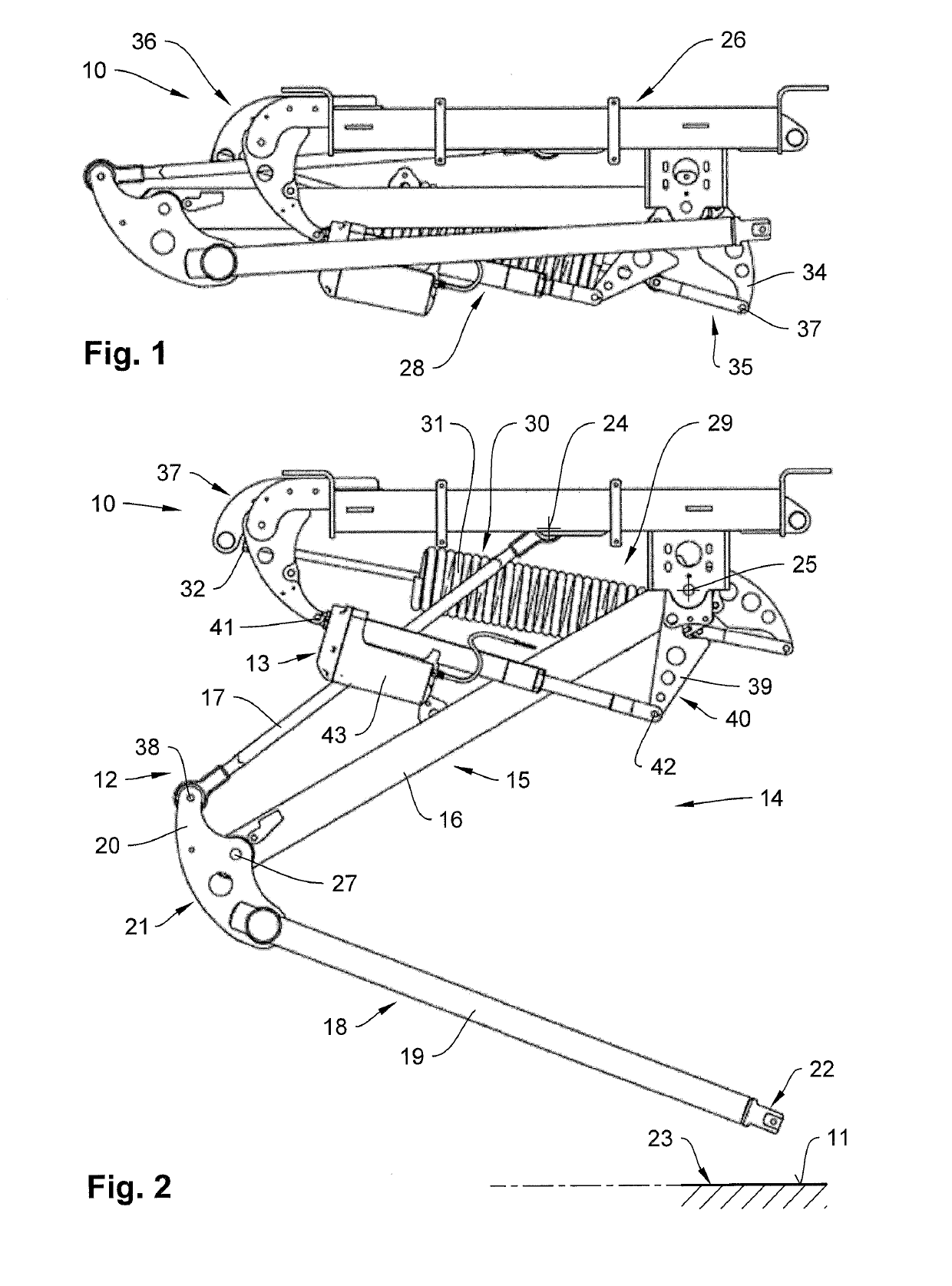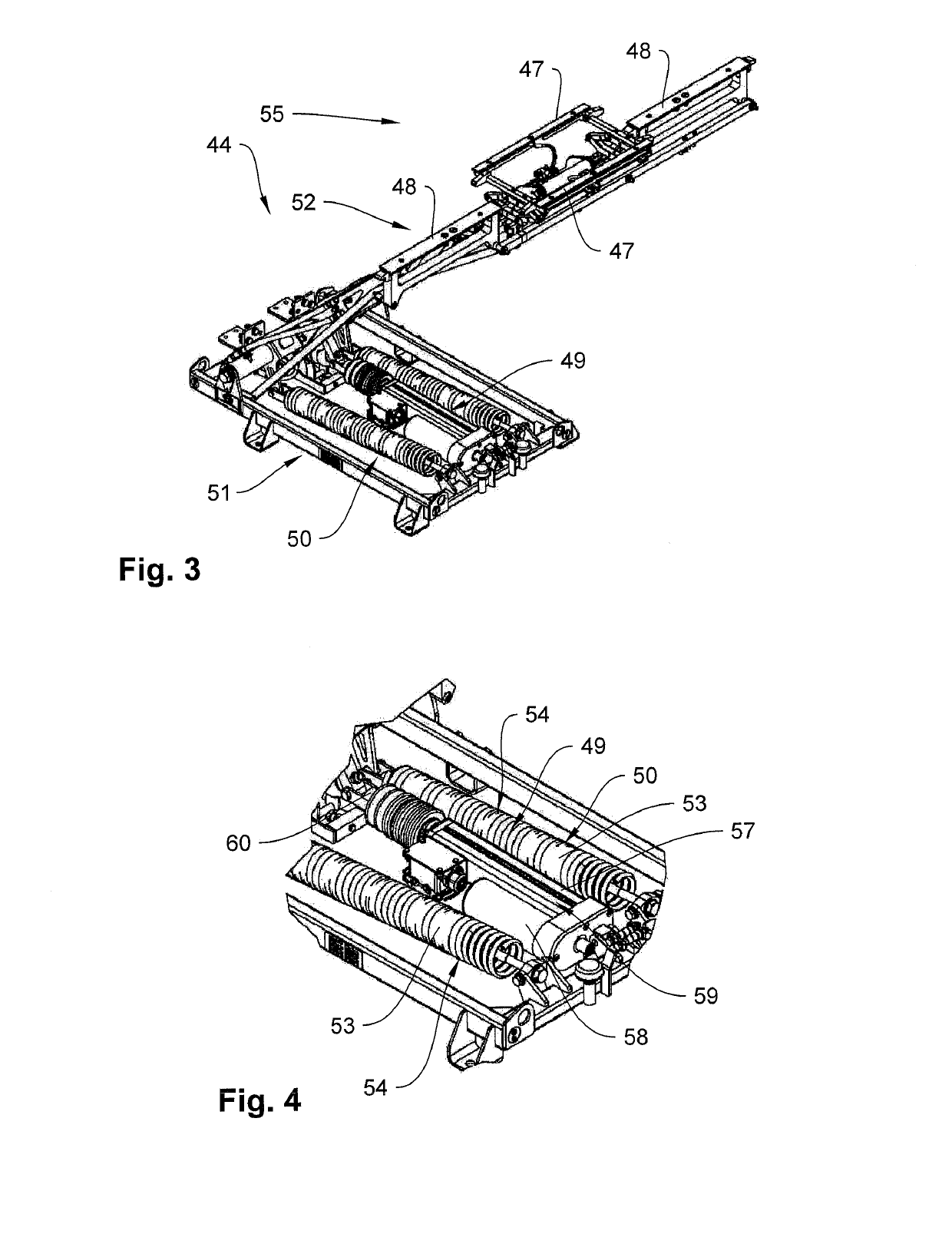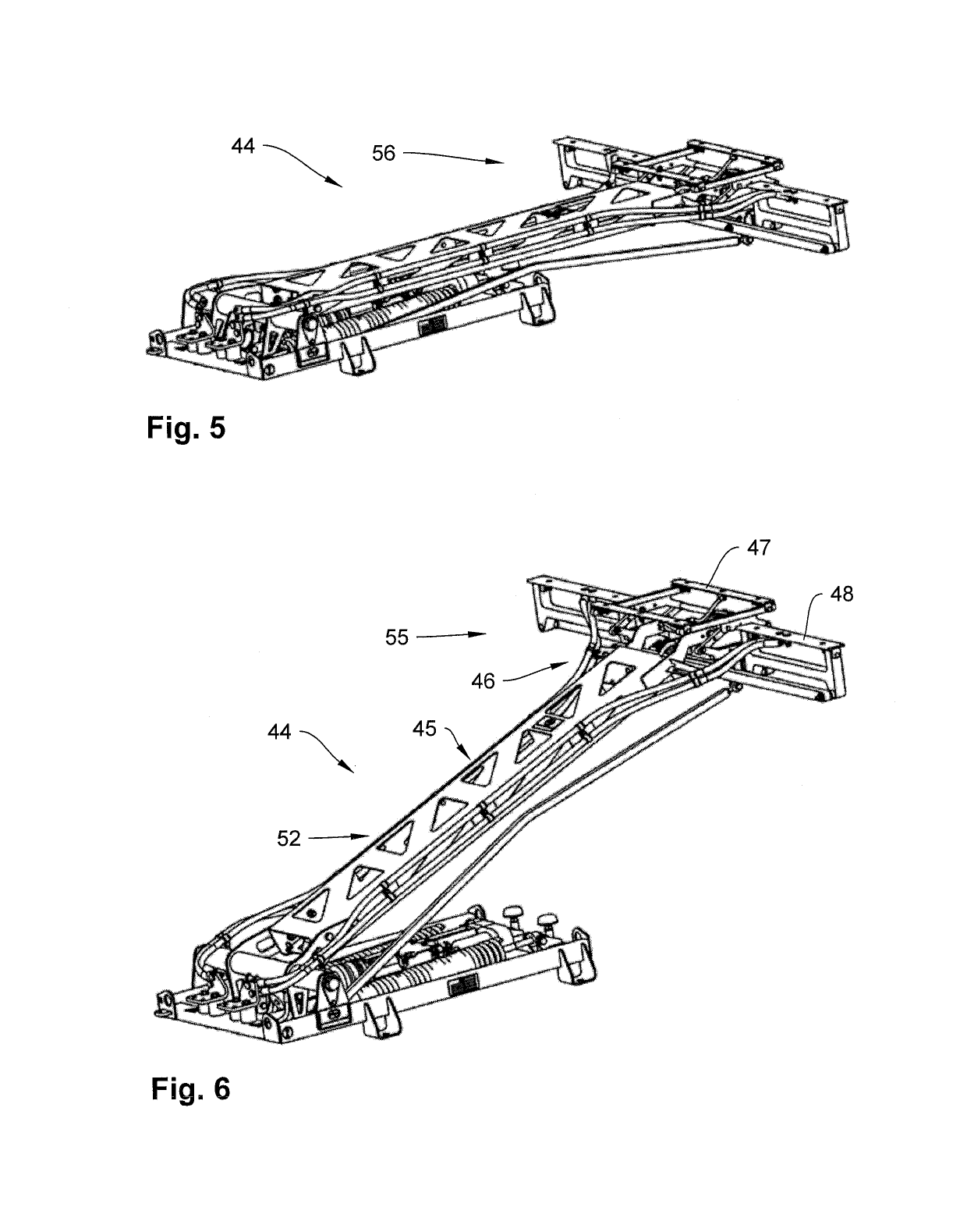Positioning unit and contacting method
a technology of positioning unit and contacting method, which is applied in the direction of electric vehicle charging technology, vehicle components, climate sustainability, etc., can solve the problems of no adjustment force at all or only very little on the articulating arm device, and the charging contact cannot be moved and charged, so as to prevent overloading of the electric motor and constant contact force
- Summary
- Abstract
- Description
- Claims
- Application Information
AI Technical Summary
Benefits of technology
Problems solved by technology
Method used
Image
Examples
first embodiment
[0036]An overview of FIGS. 1 and 2 shows a positioning unit 10 in various positions. A contacting of a charging contact surface 11 is only illustrated symbolically. The positioning unit 10 comprises an articulated arm device 12 and an adjustment drive 13 for driving the articulated arm device 12. The articulated arm device 12 is designed as a single-arm system 14 and comprises an upper scissor 15 with an upper scissors arm 16 and an upper coupling rod 17 as well as a lower scissor 18 with a lower scissors arm 19 and a lower coupling rod 20. An upper coupling link 21 is swivel-mounted to the upper scissors arm 16, so that a mount 22 of the positioning unit 10 for an electrical charging contact (not shown) of the positioning unit 10 can always be moved parallel to a horizontal plane 23. For this purpose, the upper coupling link 21 is connected to the upper coupling rod 17 via an axis 38. The lower scissors arm 19 and the lower coupling rod 20 are swivel-mounted to fixed bearings 24 an...
second embodiment
[0039]An overview of FIGS. 3 to 6 shows a positioning unit 44 that is mounted on the roof of an electrically driven vehicle (not shown). The positioning unit 44 substantially comprises an articulated arm device 45, at the end 46 of which charging contacts 47 and 48 are located for the contacting of a charging contact surface (not shown) above the vehicle. Furthermore, the positioning unit 44 comprises an adjustment drive 49 and a spring device 50 as well as a holding frame 51. The articulated arm device 45 is formed as a single-arm system 52 similar to the previously described single-arm system. The spring device 50 comprises two tension springs 53 that are formed as lifting springs 54 and exert a lifting force on the articulated arm device 45. Here, the lifting force is determined in a way that a gravitational force of the articulated arm device 45 together with the charging contacts 47 and 48 is greater than the lifting force, so that in the event of a power outage, for example, t...
PUM
 Login to View More
Login to View More Abstract
Description
Claims
Application Information
 Login to View More
Login to View More - R&D
- Intellectual Property
- Life Sciences
- Materials
- Tech Scout
- Unparalleled Data Quality
- Higher Quality Content
- 60% Fewer Hallucinations
Browse by: Latest US Patents, China's latest patents, Technical Efficacy Thesaurus, Application Domain, Technology Topic, Popular Technical Reports.
© 2025 PatSnap. All rights reserved.Legal|Privacy policy|Modern Slavery Act Transparency Statement|Sitemap|About US| Contact US: help@patsnap.com



